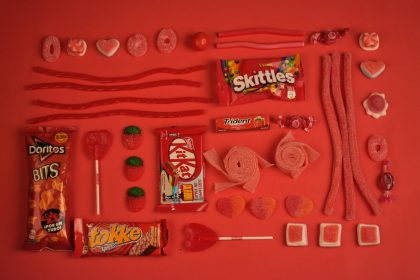When you think of Apple, you think of words like “innovation,” “sleek,” and “simple.” This is an example of brand association.

Brand association is the emotions, concepts, qualities, or traits that a consumer attaches to the business. A positive brand association is essential for building value within your company and dramatically influences your sales.
Some other examples of brand associations are:
Nike – swoosh, sports, athletes
Google – answers, search, information
Charmin – soft, toilet paper, bears
Some of the most significant factors that influence brand associations are:
– Brand identity and message
– Brand assets like logos or colors
– Customer experience
– Product and service quality
– Reputation
– Social media
– Advertisements
As a brand, you have the power to influence how consumers perceive you; this means you also have the ability to change a negative brand association into a positive one. Let’s take a look at how you can build a positive brand association.
1. Visuals
Understanding your target audience is the first step to creating visuals that give the brand associations you desire. For example, a brand for children’s products should typically have brighter colors and things like animals or cartoon characters. Or, if your brand was trying to promote their “eco-friendly” status, they could use colors or designs that represent nature and sustainability. Visuals are a huge factor in building a strong brand association. The goal is to use a logo, design, or some sort of visual element to produce happy or nostalgic emotions from your consumers.
2. Language
Language is a handy tool for creating a brand association. The right words and syntax within your branding and advertising methods are crucial to achieving the right brand association. For example, if you wanted to link your brand to golfing, using a term like “hole-in-one” or words like “drive” or “greens” in your advertisements would help. A great example of using language to create a brand association is Skittles “Taste the rainbow campaign.” The language in this campaign allows consumers to associate skittles with a pretty rainbow that promotes happiness and color.
3. Personification
Giving human qualities to inanimate products is a great way to build trust with your consumers and promote the brand association you are looking for. The M&Ms brand does a great job at this by giving each color of M&M a different personality. The comedic and lighthearted banter between the M&Ms impacts the consumers’ perception to associate M&Ms with fun.
AVOIDING OR RECOVERING FROM THE NEGATIVES
A negative brand association is never good; it drives consumers away and makes them choose competitors over you. Even with the best intentions, there is sometimes no escaping negative associations, but there are important aspects to consider to avoid and recover from them.
– Consider your customer relations: How you interact with your audience is extremely important to your brand association. Think about how you communicate with your audience across all channels like social media, emails, websites, chat, etc. How you deal with customer compliments or complaints can show a lot about your brand, and its values, so make sure to have a good customer service strategy in place to maintain a good reputation.
– Consider your partnerships: The influencers and brands you partner with reflect your brand. Today, consumers expect brands to have a voice and speak out when it comes to social and political issues. Therefore, when you partner with a brand or person, you must take responsibility and action if they exhibit socially unacceptable behaviors. For example, when Lori Laughlin, a famous “Full House” actress, was caught in a renowned college admission scandal, brands like Hallmark and Sephora severed their relationships with her. They did this to show consumers they don’t support or want to be associated with a person involved in such scandals.
– Identify and neutralize threats: Even after you have a set brand strategy, your job is never done. Continuously analyzing and identifying potential threats is crucial. Actions like responding to a negative Yelp review can help naturalize the threat of lost business by showing your consumers you care about customer experience and will act to improve. On a larger scale, this can look like responding to reports of discrimination or sexual scandals within your business. Being proactive and using social listening will keep you on your toes and allow you to face any threats head-on as quickly as possible.
Creating and maintaining positive brand associations that become engraved in consumers’ minds is an ongoing process. It does take time and effort, but you will find that a positive brand association is key to a successful business and can be achieved when you employ the techniques discussed above. Although it may seem a little scary, it is essential to remember that you are the most significant factor influencing your brand association.



